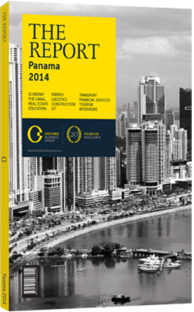A mature market: Prime office rentals see healthy growth in the capital
Already a recognisable symbol of prosperity along the Panama City skyline, office buildings continue to play a central role in the country’s real estate sector. Although demand has increased for office space, general trends indicate that rental prices remain relatively steady, contained largely by the many square metres slated to become available within the next couple of years.
Demand
Much demand for prime office space has been driven by tax incentives benefitting multinationals that set up regional headquarters in Panama. Law 41 (2007) allows for a 50% tax discount for all activities performed within national territory, as well as complete income tax exemption for executive-level salaries paid from foreign sources, among other things. More than 90 firms have already taken advantage of these benefits, referred to as sedes de empresas
For Micky Vallarino, president of local developer Desarrollo Bahía, SEM incentives are a mixed bag. “Foreign inflows and outflows are frequent and difficult to predict, which ends up impacting the market,” Vallarino told OBG. “One day a building may be completely idle and the next a foreign company could take advantage of the SEM law to buy half the properties. So data can sometimes be misleading.”
Available data does show several positive signs, beginning with improved absorption. According to CB Richard Ellis Panamá (CBRE Panamá), vacancy rates for Class A offices increased from 7% in the last semester of 2012 to 9.6% in the first semester of 2013. Even so, prices have been fluctuating over the last several semesters. While in 2012 average rental prices for prime offices rose from $22.69 to $24.41 per sq metre per month, the first half of 2013 saw another dip, lowering the average to $24.06. Rental prices for Class B office space followed a similar trend, falling from $17.23 per sq metre per month to $15.64, lower than the beginning of 2012, when the price was recorded at $16.36.
Stock
In 2013 some 220,000 sq metres are expected to enter the market, followed by 150,000 sq metres in 2014 and 230,000 sq metres in 2015, according to international real estate firm Jones Lang LaSalle. The majority of prime office space is located in the banking district (41%), while San Francisco claims 27%, Corredor Sur has 23% and some 5% exists on the western bank of the Panama Canal, known as the Reverted Areas. Though figures are still small, the Reverted Areas display much potential for future growth as the city expands and more high-end residential developments migrate to this area. The residential and commercial complex Panamá Pacífico is a prime example of its growing potential, offering incentives for international firms, which include reduced taxes and simplified migration procedures for foreign personnel, among others.
Prime Time
Prime office space should continue to be concentrated in downtown areas, such as the Corredor Sur. While the area has 46,500 sq metres of leasable Class A offices and ended the first semester of 2013 with a full occupancy rate, more than 96,016 sq metres are currently under construction, according to CBRE Panamá. The banking district and Costa del Este remain some of the hottest spots in Panama City, with some 25 prime office projects currently under way. Sales prices for these exclusive areas inched their way up the charts. According to CBRE Panamá, prime office space in the banking district sold for an average price of $2821 per sq metre during the first months of 2013, up from $2550 per sq metre in 2012.
Enrique Asensio, president of the Panamanian Chamber of Construction, attributes demand to the chain of activity brought on by large infrastructure investments.
“The growth and demand for offices will continue to be driven by canal expansion and subsequent investment,” he said. He added that high demand for office space has attracted many developers that formerly operated only in the residential segment.
Though construction of prime offices seems to have generated a slight oversupply for the moment, sector specialists remain confident in the country’s ability to attract multinational firms and absorb that idle space.
You have reached the limit of premium articles you can view for free.
Choose from the options below to purchase print or digital editions of our Reports. You can also purchase a website subscription giving you unlimited access to all of our Reports online for 12 months.
If you have already purchased this Report or have a website subscription, please login to continue.

